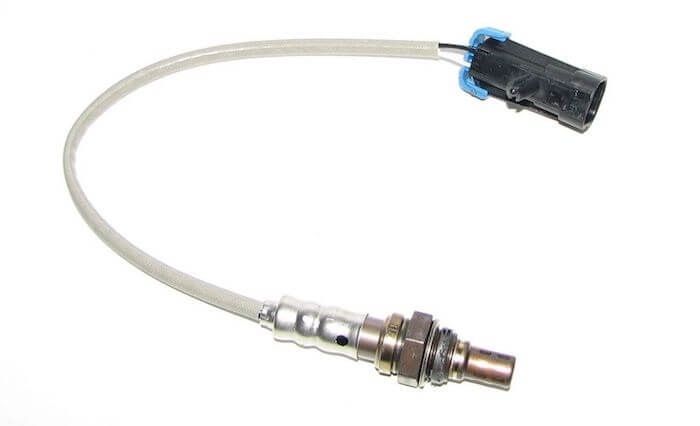
P2248 O2 Sensor Reference Voltage Performance Bank 2 Sensor 1
Content
- P2248 O2 Sensor Reference Voltage Performance Bank 2 Sensor 1
- OBD-II DTC Datasheet
- What does P2248 mean?
- What is the severity of this DTC?
- What are some of the symptoms of the code?
- What are some of the common causes for the code?
- What are some steps to troubleshoot the P2248?
- Related DTC discussions
- Need more help with the P2248 code?
P2248 O2 Sensor Reference Voltage Performance Bank 2 Sensor 1
OBD-II DTC Datasheet
O2 Sensor Reference Voltage Performance Bank 2 Sensor 1
What does P2248 mean?
This Diagnostic Trouble Code (DTC) is a generic transmission code and applies to many OBD-II vehicles (1996 and newer). This may include, but is not limited to, vehicles from Honda, Ford, Mazda, VW, Mercedes-Benz, Audi, Hyundai, Acura, BMW, etc. Despite the general nature, the exact stages of repairs may vary depending on the year of manufacture. brands, models and transmissions. configuration.
A stored code P2248 means the powertrain control module (PCM) has detected an electrical voltage that is outside the normal expected performance range for the upstream O2 sensor for engine block 1. Sensor 2 refers to the upstream sensor and block XNUMX refers to the block. an engine that does not have a number one cylinder.
The engine air-fuel ratio for each engine row is monitored by the PCM using data from heated exhaust oxygen sensors. Each oxygen sensor is constructed using a zirconia sensing element located in the center of a vented steel housing. Tiny electrodes (usually platinum) attach the sensor to the wires in the oxygen sensor harness connector and the connector connects to the controller network (CAN) that connects the oxygen sensor harness to the PCM connector.
Each oxygen sensor is screwed (or twisted) into the exhaust pipe. It is positioned so that the sensing element is closer to the center of the pipe. When waste exhaust gases leave the combustion chamber (through the exhaust manifold) and pass through the exhaust system (including catalytic converters), they pass through the oxygen sensors. Exhaust gases enter the oxygen sensor through specially designed air vents in the steel housing and swirl around the sensor element. Swirling ambient air is drawn in through the wire cavities in the sensor housing, where they fill the tiny chamber in the middle. Then the air (in a tiny chamber) heats up. This causes the oxygen ions to produce energy, which is recognized by the PCM as voltage.
Differences between the amount of oxygen ions in the ambient air (drawn into the O2 sensor) and the number of oxygen molecules in the exhaust cause the oxygen ions inside the O2 sensor to very quickly and intermittently bounce from one platinum layer to another. ... As the pulsating oxygen ions move between the platinum layers, the output voltage of the oxygen sensor changes. The PCM sees these changes in the oxygen sensor output voltage as changes in the oxygen concentration in the exhaust gas. The voltage outputs from the oxygen sensors are lower when more oxygen is present in the exhaust (lean state) and higher when less oxygen is present in the exhaust (rich state).
If the PCM detects a voltage on the oxygen sensor reference circuit outside the normal expected performance range, P2248 will be stored and a malfunction indicator lamp (MIL) may illuminate. Most vehicles will require several ignition cycles (on failure) to turn on the warning light.
Typical oxygen sensor O2: 
What is the severity of this DTC?
Uneven voltage on the O2 sensor reference circuit can result in poor fuel economy and reduced engine performance. P2248 should be categorized as serious and should be corrected as soon as possible.
What are some of the symptoms of the code?
Symptoms of a P2248 trouble code may include:
- Reduced fuel efficiency
- Reduced engine power
- Stored Misfire Codes or Lean / Rich Exhaust Codes
- Service engine lamp will light up soon
What are some of the common causes for the code?
Reasons for this code may include:
- O2 sensor fuse blown
- Defective oxygen sensor / s
- Burnt, frayed, broken, or disconnected wiring and / or connectors
What are some steps to troubleshoot the P2248?
You will need a diagnostic scanner, digital volt / ohmmeter (DVOM), and reliable vehicle information source to accurately diagnose the P2248 code.
You can save time by searching for Technical Service Bulletins (TSBs) that reproduce the stored code, vehicle (year, make, model, and engine) and symptoms found. This information can be found in your vehicle information source. If you find the right TSB, it can quickly fix your problem.
After you connect the scanner to the vehicle diagnostic port and get all stored codes and associated freeze frame data, write down the information (in case the code turns out to be intermittent). After that, clear the codes and test drive the car until one of two things happens; the code is restored or the PCM enters ready mode.
The code may be more difficult to diagnose if the PCM enters ready mode at this point because the code is intermittent. The condition that led to the persistence of P2248 may need to worsen before an accurate diagnosis can be made. If the code is restored, continue diagnostics.
You can get connector views, connector pinouts, component locations, wiring diagrams, and diagnostic block diagrams (related to the code and the vehicle in question) using your vehicle information source.
Visually inspect the associated wiring and connectors. Repair or replace cut, burnt, or damaged wiring.
Use the DVOM to check the voltage of the O2 sensor at the appropriate pin of the connector (next to the sensor). If no voltage is found, check the system fuses. Replace blown or defective fuses if necessary.
If voltage is detected, check the appropriate circuit at the PCM connector. If no voltage is detected, suspect an open circuit between the sensor in question and the PCM. If voltage is found there, suspect a faulty PCM or a PCM programming error.
To check O2 sensors: Start the engine and allow it to reach normal operating temperature. Let the engine idle (in neutral or parking). With the scanner connected to the vehicle diagnostic port, observe the oxygen sensor input in the data stream. Narrow down your data stream to include only relevant data for a faster response.
If the oxygen sensors are operating normally, the voltage across the oxygen sensors upstream of the catalytic converter will cycle continuously from 1 to 900 millivolts when the PCM enters closed loop mode. The post-cat sensors will also cycle between 1 and 900 millivolts, but they will be set at a certain point and remain relatively stable (compared to pre-cat sensors). Oxygen sensors that are not working properly should be considered defective if the engine is in good working order.
- A blown O2 sensor fuse is not the cause of a stored P2248 code, but a response to a short circuit in the circuit.
Related DTC discussions
- There are currently no related topics in our forums. Post a new topic on the forum now.
Need more help with the P2248 code?
If you still need help with DTC P2248, post a question in the comments below this article.
NOTE. This information is provided for informational purposes only. It is not intended to be used as a repair recommendation and we are not responsible for any action you take on any vehicle. All information on this site is protected by copyright.
